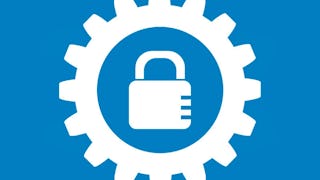The course begins with an introduction to enterprise architecture and IT fundamentals, laying the groundwork for understanding how different technological components contribute to overall risk. You will explore the roles of hardware, software, networking, and cloud technologies, and learn how to incorporate these elements into comprehensive risk management strategies. This foundational knowledge will help you appreciate the complexities of IT infrastructure and its impact on organizational risk.

Gain next-level skills with Coursera Plus for $199 (regularly $399). Save now.

Information Technology and Security Principles
This course is part of CRISC: Certified in Risk and Information Systems Control Specialization

Instructor: Packt - Course Instructors
Included with
(18 reviews)
Recommended experience
What you'll learn
Analyze the impact of enterprise architecture components on IT risk management
Design and implement effective IT project and lifecycle risk management strategies
Apply core information security principles to protect organizational data
Evaluate data privacy requirements and implement advanced security measures
Details to know

Add to your LinkedIn profile
4 assignments
See how employees at top companies are mastering in-demand skills

Build your subject-matter expertise
- Learn new concepts from industry experts
- Gain a foundational understanding of a subject or tool
- Develop job-relevant skills with hands-on projects
- Earn a shareable career certificate

There are 4 modules in this course
In this module, we will explore the fundamental components of enterprise architecture and their influence on IT risk management. You will gain a comprehensive understanding of how hardware, software, networking, and cloud technologies contribute to risk, and how to integrate these insights into effective risk management strategies.
What's included
4 videos2 readings
In this module, we will cover the unique risks introduced by IT projects and the importance of managing these throughout the project and system development lifecycles. You will learn to create robust disaster recovery and business continuity plans that mitigate the impact of potential disasters on business operations.
What's included
4 videos1 assignment
In this module, we will explore the evolving landscape of emerging technologies and their associated risks. You will gain a solid understanding of core information security principles, including confidentiality, integrity, and availability, and learn how to implement effective access controls to safeguard sensitive information.
What's included
4 videos
In this module, we will focus on advanced security measures and data privacy fundamentals. You will learn about the importance of encryption, the role of security awareness training in minimizing human error, and how to navigate the complexities of data privacy requirements to ensure compliance and protect organizational data.
What's included
3 videos1 reading3 assignments
Earn a career certificate
Add this credential to your LinkedIn profile, resume, or CV. Share it on social media and in your performance review.
Instructor

Offered by
Explore more from Computer Security and Networks
 Status: Free Trial
Status: Free Trial
Packt
 Status: Free Trial
Status: Free TrialEC-Council
 Status: Free Trial
Status: Free Trial
Why people choose Coursera for their career




Learner reviews
18 reviews
- 5 stars
88.88%
- 4 stars
11.11%
- 3 stars
0%
- 2 stars
0%
- 1 star
0%
Showing 3 of 18
Reviewed on Aug 28, 2025
amazing content. with the help of this content, will definitely clear exam.
Reviewed on Jul 29, 2025
Excellent content, beautifully explained with examples. I can relate it to my work, fantastic job instructors.
Reviewed on Jul 19, 2025
Excellent Efforts by the Team who prepared this and covers the topics needed
Frequently asked questions
Yes, you can preview the first video and view the syllabus before you enroll. You must purchase the course to access content not included in the preview.
If you decide to enroll in the course before the session start date, you will have access to all of the lecture videos and readings for the course. You’ll be able to submit assignments once the session starts.
Once you enroll and your session begins, you will have access to all videos and other resources, including reading items and the course discussion forum. You’ll be able to view and submit practice assessments, and complete required graded assignments to earn a grade and a Course Certificate.
More questions
Financial aid available,





